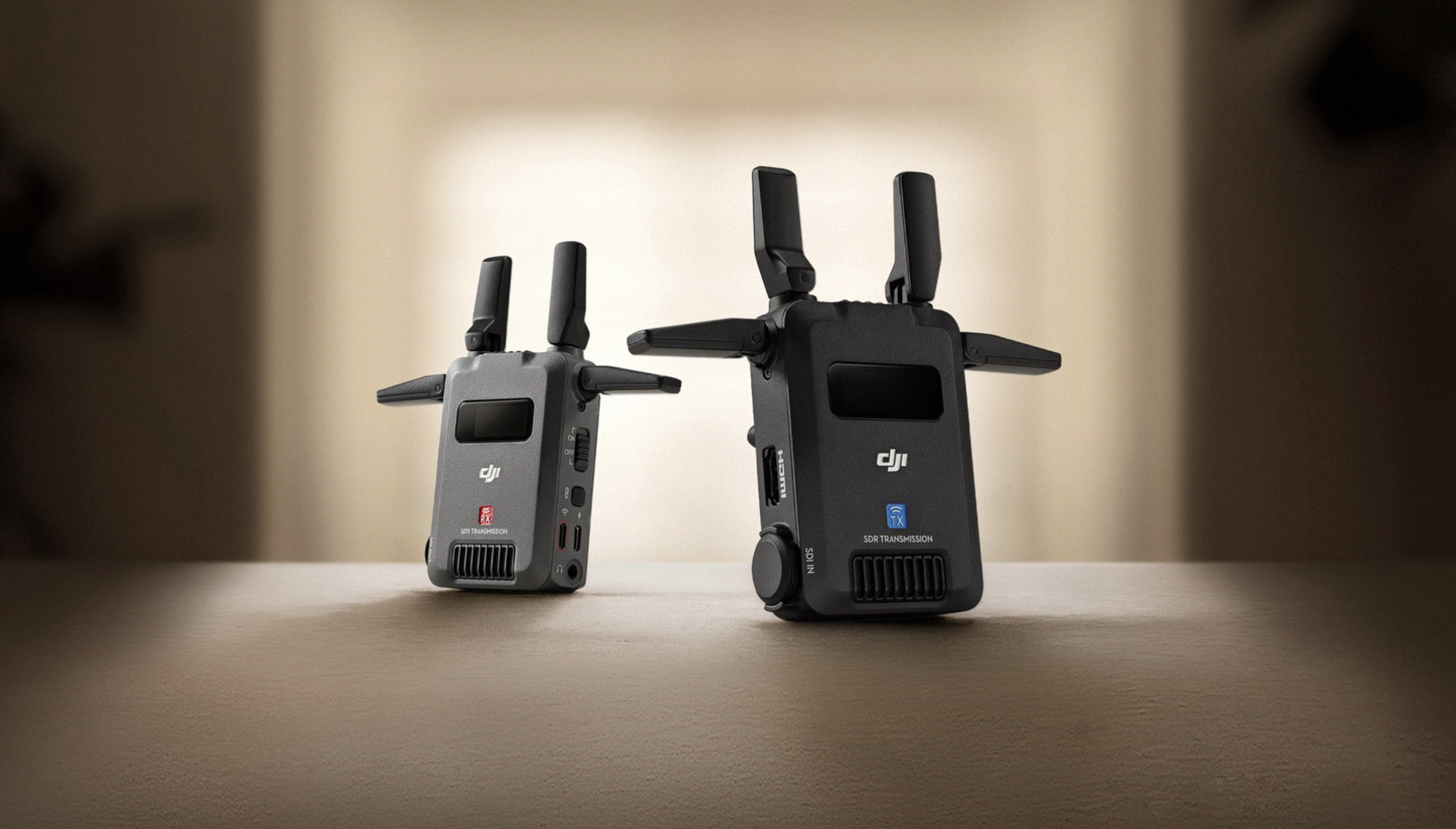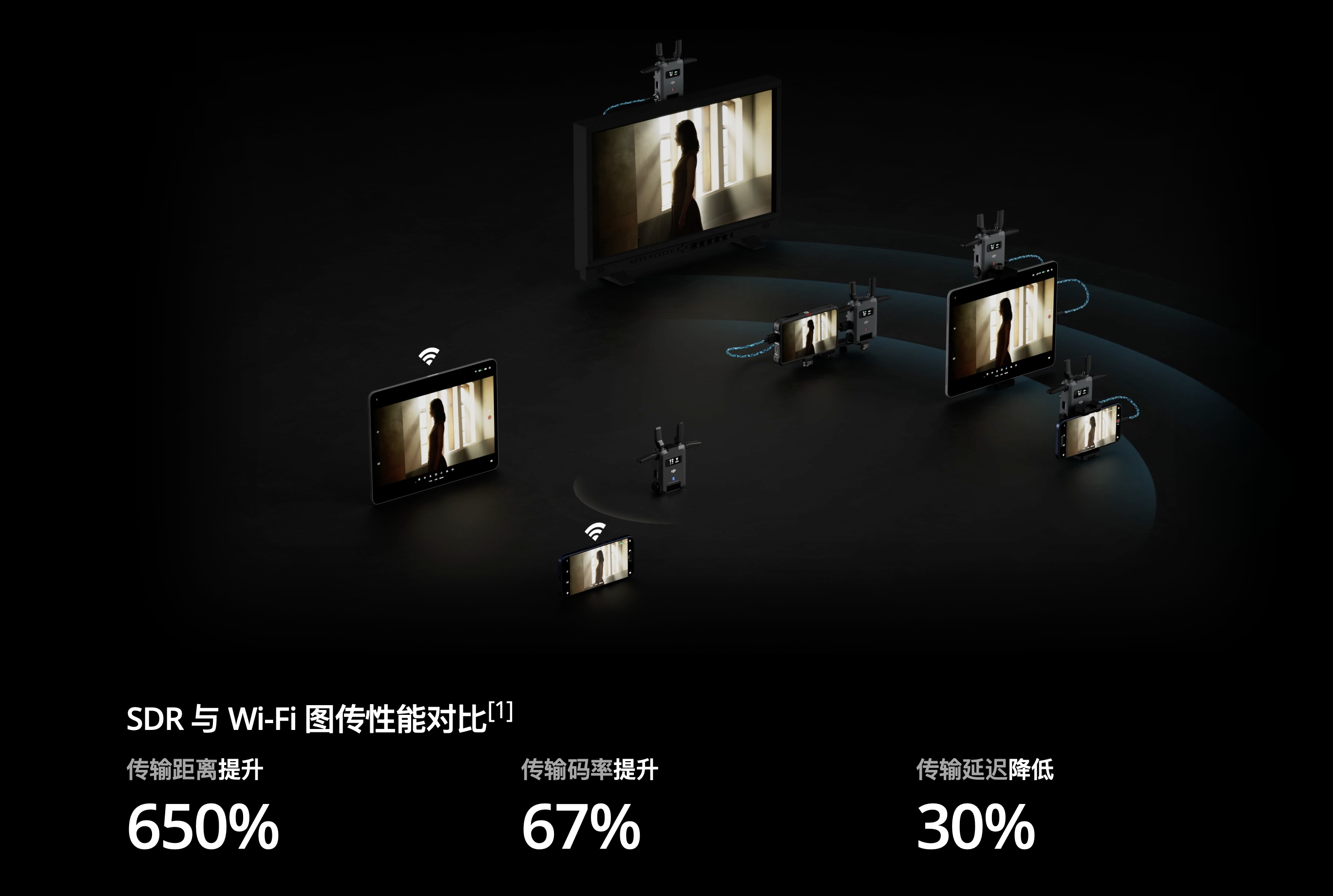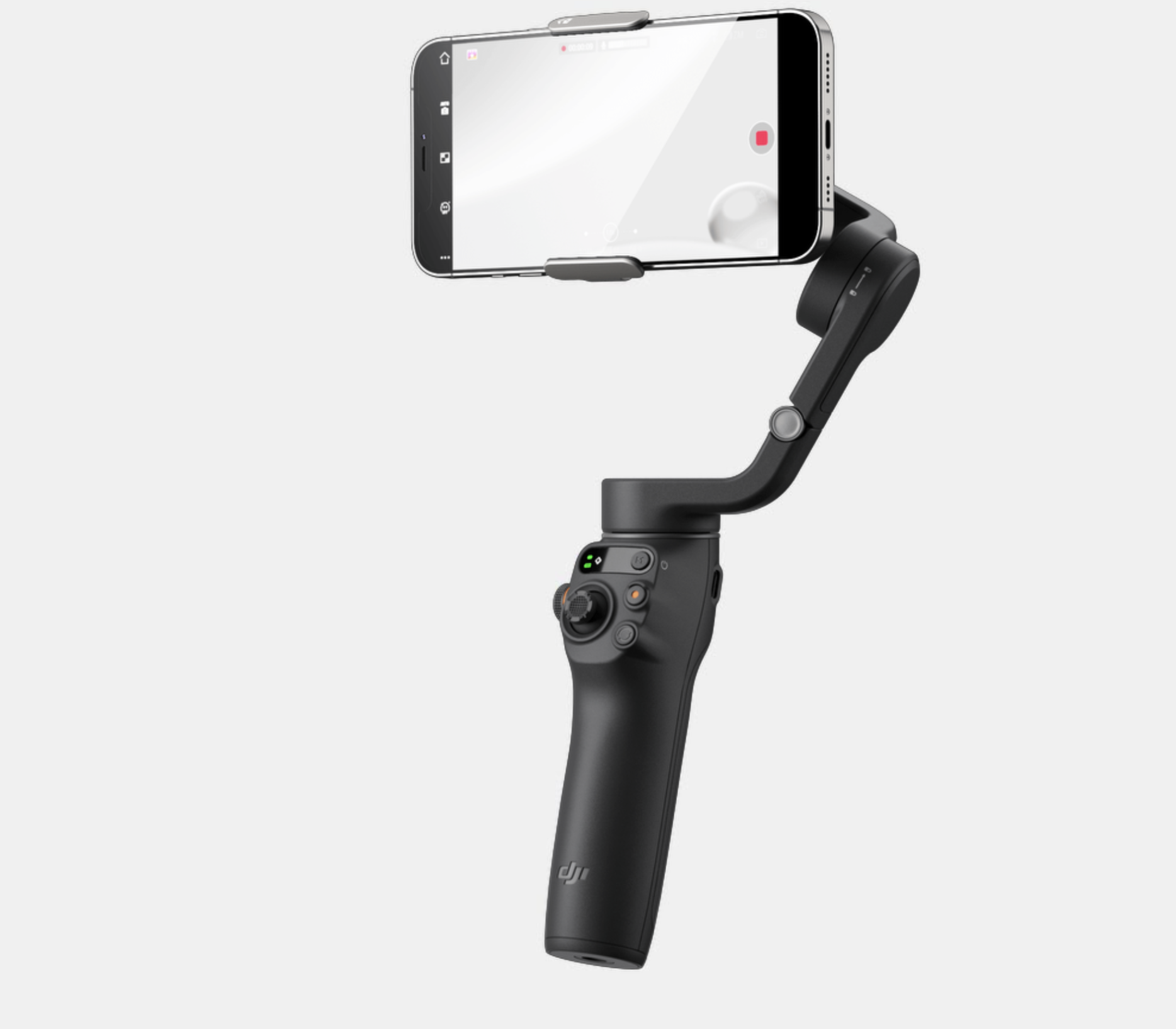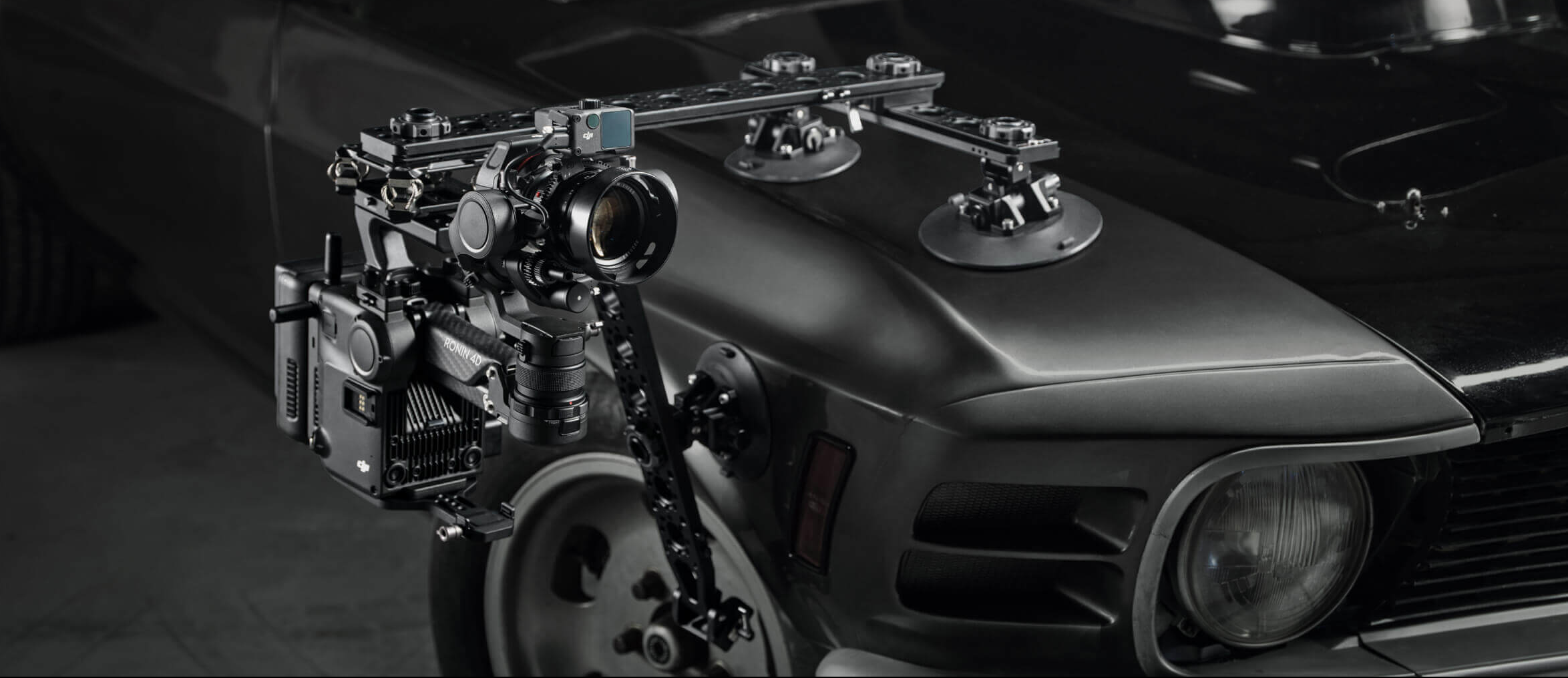Not toys but tools, DJI quietly becomes the king of professional imaging
![]() 07/19 2024
07/19 2024
![]() 631
631
The emergence of aerial photography drones has expanded our perspective on viewing landscapes. And the innovation of wireless image transmission technology has further broadened the boundaries of aerial photography drones' vision. Since Parrot released the industry's first consumer-grade aerial photography drone in 2010, how to make the footage captured by drones clear and transmitted in real-time has become a problem that all drone manufacturers must solve.
Of course, there are multiple mature wireless image transmission solutions in the drone industry, allowing aerial photography drones to transmit clearer images over longer distances, under stronger interference, with higher bitrates, and lower latency. Recently, DJI, as a leading brand in consumer-grade drones, has introduced its latest image transmission technology.
More stable and user-friendly DJI SDR Image Transmission
In 2022, DJI released the cinematic-grade wireless image transmission system - DJI Transmission Highlight Monitor Kit, bringing users a more integrated collaborative shooting experience. In 2023, DJI Transmission Image Transmission Receiver Standard Kit was launched, which, when paired with the DJI PRO control ecosystem, can bring a more efficient collaboration experience.

Image source: DJI
On July 18, 2024, DJI once again updated its image transmission equipment and launched the all-new DJI SDR Image Transmission. The new image transmission is developed based on Software Defined Radio (SDR) technology and can use both SDR and Wi-Fi transmission modes, achieving a better balance between signal stability, penetration, and ease of use.
Putting aside DJI's proprietary wireless transmission protocol, there are mainly three types of common wireless image transmission technologies on the market: direct Wi-Fi transmission, digital microwave transmission often used in professional aerial photography and broadcasting, and 4G (5G) transmission with high requirements for cellular signals.
However, these three image transmission technologies also have their respective shortcomings: Wi-Fi technology, although widely used, is susceptible to interference, has limited transmission distance, and high power consumption, making it suitable for short-range applications. Digital microwave transmission provides high-quality transmission but comes with expensive equipment, complex installation and debugging, and high environmental requirements, making it suitable for professional fields. While 4G/5G mobile networks have the advantage of wide-area coverage, uneven network coverage in remote areas, high transmission delays, and expensive data fees make them unsuitable for long-term, high-traffic applications.
The "software-defined" nature of SDR technology means it has flexibility and programmability, enabling the implementation of multiple communication protocols through software to adapt to different transmission standards and frequency bands. This not only improves spectrum utilization efficiency, reduces interference, and provides stable transmission performance but also automatically adjusts transmission parameters to ensure optimal quality.

Image source: DJI
Taking the newly released SDR Image Transmission as an example, when the channel is interfered with, DJI SDR Image Transmission will seamlessly and automatically hop between the 2.4 GHz, 5.8 GHz, and DFS frequency bands to switch to the optimal transmission channel, maintaining the stability of the transmitted image. According to DJI, its image transmission distance can reach up to 3 kilometers, already meeting the needs of most mobile shooting scenarios. This SDR design has also led the wireless image transmission and aerial photography industries to a new level.
In fact, SDR Image Transmission is just a microcosm of DJI's role in professional imaging. According to a 2023 statistical report, although DJI performs well in both the professional and commercial drone markets, its primary source of revenue remains consumer-grade products. Data shows that DJI holds approximately 70% to 80% of the global consumer-grade drone market share. In contrast, its share and revenue in the professional and commercial drone markets are relatively low, indicating that DJI's core business is still concentrated in the consumer market.
Quietly, DJI becomes the king of professional imaging
DJI's consumer-grade products cover aerial photography drones, FPV drones, action cameras, pocket (gimbal) cameras, stabilizers, microphones, outdoor power sources, and more.
If one word were to define DJI, "drone" would undoubtedly come to mind first. However, from a product structure perspective, DJI has gradually flourished in the imaging field, even carving out a new faction and becoming a professional imaging brand based on exceptional stabilization and image transmission technology.
The aerial photography drone business is the core of its consumer market, with the Phantom series serving as the starting point for DJI's aerial photography drone "breakout." In 2016, DJI released the Phantom 4, which quickly became a popular choice in the market due to its excellent flight performance and camera capabilities, establishing DJI's leading position in the aerial photography drone field.

Image source: DJI
In fact, the aerial photography drone market in 2016 was not yet completely "DJI's say-so": In September 2016, action camera giant GoPro announced its entry into the aerial photography drone market with the launch of its first consumer-grade aerial photography drone, the GoPro Karma. As the Karma and DJI Mavic Pro were released around the same time, this move was seen as "targeting DJI."
Unfortunately, the Karma experienced power outages less than three months after its release, prompting GoPro to recall the product, effectively handing over the hyped aerial photography drone market to the Mavic Pro and Phantom 4. With such a bleak start, the Karma struggled for less than two years before being discontinued, escorting DJI to the throne of aerial photography drones.
Since then, DJI has successively launched the Mavic series and Mini series, further enriching its consumer drone product line. The Mavic series, with its portability and professional-grade shooting capabilities, has attracted numerous photographers and video creators. The Mini series, on the other hand, with its compact size, light weight, and ease of operation, has become an ideal choice for travel and daily recording.

Image source: DJI
DJI's stabilizer business is also closely related to its drone business. In 2015, DJI launched its first handheld stabilizer, the Osmo. For stabilizers, the three-axis stabilization algorithm and motor control technology are the foundation of the product experience. For this "new category," DJI directly applied the stabilization technology accumulated in the drone field to its stabilizer products, allowing the Osmo category to avoid a "cold start."
In terms of smart interaction, DJI has incorporated many smart shooting features, such as intelligent tracking, gesture control, and trajectory shooting, from its drones into its handheld stabilizers.
This cross-category technology sharing within the brand even extends to DJI's professional line of products. Before DJI launched the Ronin cinema camera, some teams with a need for stable shooting and a relatively limited budget would directly "use drones" for filming. The emergence of the Ronin cinema camera has brought a more convenient and safer new option to these professional users.

Image source: DJI
This technology sharing not only optimizes product performance but also promotes rapid market expansion. By providing an integrated aerial to ground shooting solution, DJI meets the diverse needs of users, enhancing brand loyalty and market share. This comprehensive product layout and technological innovation have also rapidly grown DJI into a global leader in the field of imaging technology.
DJI Imaging Revelation: Not Toys but Tools
In my opinion, becoming one of the global leaders in the imaging field is actually an inevitable result of DJI's horizontal interoperability of product technologies. However, beyond horizontal technology interoperability, the vertical interconnection between DJI's "consumer" and "professional" product lines is also a necessary condition for DJI's success.
From the perspective of video creators, DJI's emergence has played a crucial role in the success of the domestic video creation field, especially the Vlog sector. Early consumer-grade drones were often seen as high-end toys with limited functionality and narrow application scenarios. However, through continuous innovation, DJI has transformed drones from simple entertainment tools into powerful imaging creation devices, widely used in various professional and amateur creations.

Image source: DJI
Moreover, DJI's integrated shooting solutions enable users to flexibly use its products in different scenarios, improving the convenience and quality of creation. Drones for distant landscapes, stabilizers for mobile footage to assist mobile phones, coupled with external microphones and compact action cameras, DJI has built an integrated creation ecosystem with a rich and high-performance consumer product portfolio. At the same time, this allows video bloggers to experience the same creative space as professional-grade products at consumer-grade prices, realizing an upgrade in their works.
By providing high-quality products and exceptional user experiences, DJI has successfully enhanced brand awareness and user stickiness. Users start with the initial drone experience and gradually expand to using other DJI creation tools, forming a high level of brand loyalty. This brand effect has enabled DJI to dominate the consumer market and attract a large number of loyal users.
This "de-toying" strategy has also greatly promoted the popularity of video creation and made DJI a formidable presence in the video creation field. As more and more creators join, DJI's products and ecosystem will continue to provide them with strong support, driving further development in the global imaging technology field.
After all, good creation cannot be separated from good tools. When everyone can use satisfactory creation tools, how far away is the prosperity of the video ecosystem?
Source: Leitech







